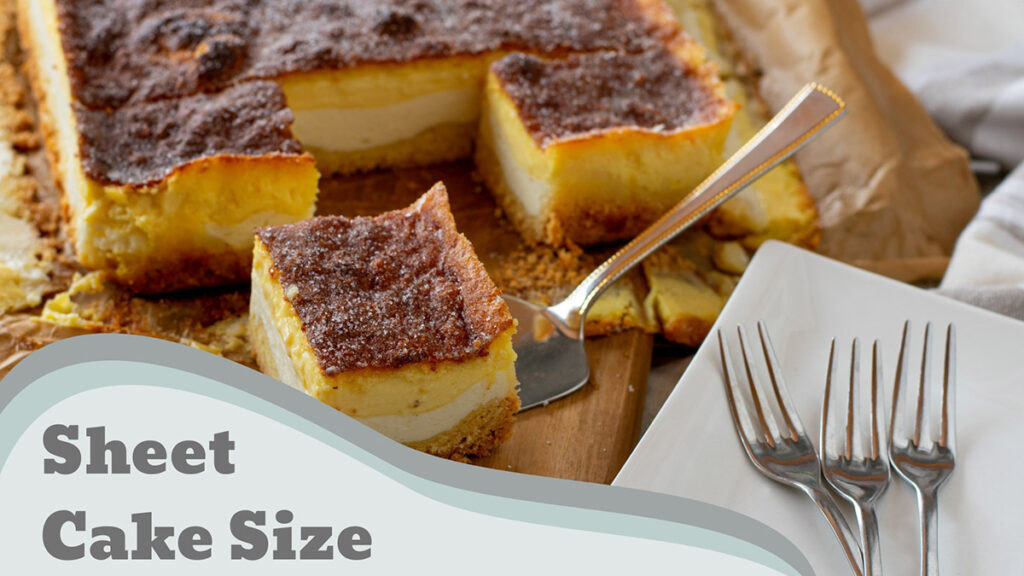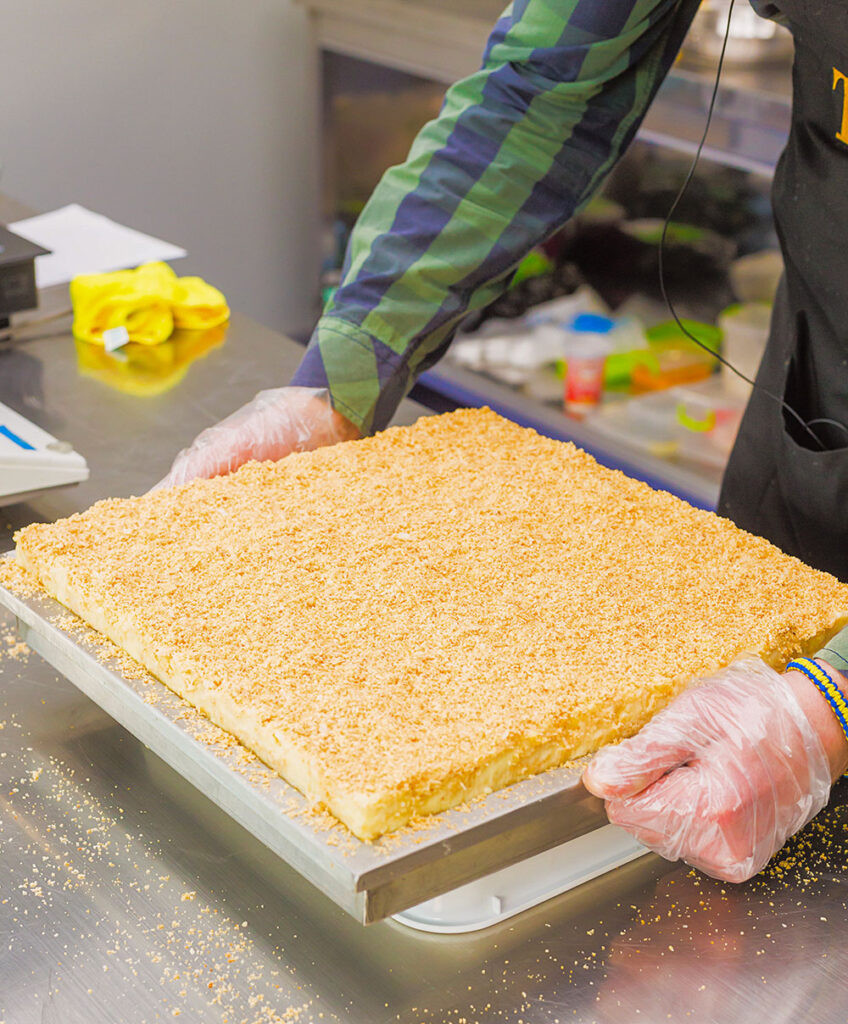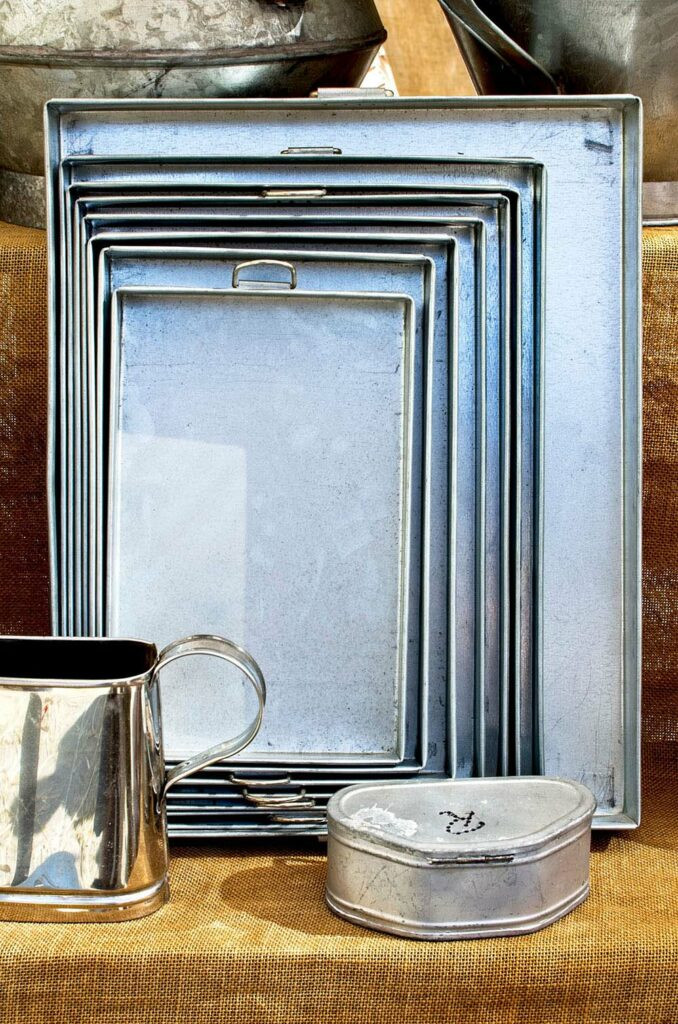Sheet cakes are a timeless favorite for celebrations, praised for their ease of baking and crowd-pleasing nature. Whether you’re a seasoned baker or just starting out, sheet cakes offer a delicious and straightforward option for any gathering. But before you preheat your oven, a crucial question arises: How Many People Will A Sheet Cake Serve? Getting the size right ensures you have enough cake for everyone to enjoy without excessive leftovers.
This guide will walk you through everything you need to know about sheet cake servings, from standard sizes and pan dimensions to factors that influence how many slices you can get. Let’s dive into the world of sheet cakes and ensure your next event is perfectly portioned!
Understanding Common Sheet Cake Sizes and Servings
Sheet cakes typically come in three main sizes, each designed to cater to different numbers of guests. These sizes are generally referred to as quarter, half, and full sheet cakes. Understanding the dimensions and serving capacity of each will help you choose the right one for your event.
| Sheet Cake Type | Approximate Size (Inches) | Typical Batter (Cups) | Servings (Approximate) | Best For |
|---|---|---|---|---|
| Quarter Sheet Cake | 9″ x 13″ | Up to 4 cups | 20-24 | Small gatherings, family dinners, baby showers |
| Half Sheet Cake | 12″ x 18″ | 7-8 cups | 36-48 | Birthday parties, receptions, medium-sized events |
| Full Sheet Cake | 18″ x 24″ | 16 cups | 70-80 | Large parties, weddings, corporate events |
 Chart showing sheet cake sizes and servings
Chart showing sheet cake sizes and servings
Visual representation of sheet cake sizes to help understand how many servings each size provides.
Quarter Sheet Cake: Ideal for Intimate Gatherings
A quarter sheet cake, measuring around 9″ x 13″, is the smallest of the standard sheet cake sizes. It’s perfectly suited for more intimate gatherings, serving approximately 20 to 24 people. This size is a great choice for family get-togethers, smaller birthday parties, baby showers, or any event where you expect around two dozen guests. If you’re looking for a manageable cake size that won’t leave you with tons of leftovers, the quarter sheet is an excellent option.
Half Sheet Cake: The Go-To for Mid-Sized Parties
Stepping up in size, the half sheet cake measures about 12″ x 18″ and is a popular choice for medium-sized events. A half sheet cake typically serves between 36 and 48 guests, making it ideal for birthday parties, office celebrations, or receptions. If you’re expecting a crowd of around 40 people, a half sheet cake will generally provide a comfortable serving for everyone.
Full Sheet Cake: The Choice for Large Events
For large-scale events like weddings, corporate gatherings, or big birthday bashes, the full sheet cake is the answer. Measuring approximately 18″ x 24″, a full sheet cake is designed to serve a significant number of people, typically ranging from 70 to 80 servings. When you need to feed a large crowd, a full sheet cake ensures everyone gets a slice of the celebration.
 Overhead view of a full sheet cake with white frosting
Overhead view of a full sheet cake with white frosting
A full sheet cake, perfect for serving a large gathering of 70-80 people at weddings or big events.
Selecting the Right Cake Pan Size for Your Sheet Cake
Using the correct pan size is essential for baking a sheet cake that is the right thickness and proportions. Matching your pan to the desired sheet cake size is a straightforward process. Here’s a quick guide to cake pan sizes for standard sheet cakes:
- Full Sheet Cake Pan: 18″ x 24″
- Half Sheet Cake Pan: 12″ x 18″
- Quarter Sheet Cake Pan: 9″ x 13″ (or sometimes 9″ x 12″)
 Table showing various cake pan sizes for different sheet cakes
Table showing various cake pan sizes for different sheet cakes
A visual guide illustrating standard cake pan sizes for quarter, half, and full sheet cakes.
While kitchen supply stores often understand “quarter,” “half,” and “full” sheet pan sizes, it’s always best to specify dimensions in inches to avoid any confusion, especially when ordering online or from less specialized stores.
Consider the depth of your pan as well. Deeper pans are excellent for single-layer cakes, providing a more substantial cake. For multi-layered sheet cakes, you can use two shallower pans to bake thinner layers or one deep pan that you slice into layers after baking and cooling. Cake pan extenders can also be helpful for achieving taller cakes with straight edges, preventing over-baking in the process.
Calculating Servings: Beyond Standard Guidelines
While the serving guidelines for sheet cakes are a helpful starting point, the actual number of servings can be influenced by several factors. The size of your slices is a primary consideration. Standard serving sizes are often based on slices that are roughly 2 inches by 2 inches or 2 inches by 3 inches. Larger slices will naturally reduce the number of servings you get from a cake, while smaller, wedding-sized slices will increase the yield.
To get a more precise estimate of servings, you can use a simple calculation:
(Pan Area) / (Serving Area) = Number of Servings
Where:
- Pan Area = Pan Width x Pan Length
- Serving Area = Desired Slice Width x Desired Slice Length
For example, let’s say you have a half sheet cake (12″ x 18″) and you plan to cut slices that are 2″ x 2″.
- Pan Area = 12 inches x 18 inches = 216 square inches
- Serving Area = 2 inches x 2 inches = 4 square inches
- Number of Servings = 216 square inches / 4 square inches = 54 servings
This calculation shows that a half sheet cake, cut into 2″ x 2″ slices, can yield approximately 54 servings, which is on the higher end of the typical 36-48 serving range. Adjusting your slice size will directly impact the final number of portions.
Does Cake Shape Matter? Round vs. Square Sheet Cakes
Traditionally, sheet cakes are rectangular. However, round cakes can also be considered sheet cakes in a broader sense, especially when discussing serving sizes. Cutting round cakes into even slices can be slightly more challenging than rectangular cakes, potentially leading to uneven portions, especially from the center versus the edges.
When estimating servings for round or square cakes, consider the intended slice size. Wedding servings are typically smaller (around 1.5″ x 2″), while party servings are often a bit larger. Here are some general serving guidelines based on cake shape and size:
Round Cake Serving Chart
| Pan Size | Wedding Servings (1.5″ x 2″ slices) | Party Servings (Larger slices) |
|---|---|---|
| 6″ Round | 12 | 8 |
| 8″ Round | 24 | 15 |
| 10″ Round | 38 | 30 |
| 12″ Round | 56 | 45 |
Square Cake Serving Chart
| Pan Size | Wedding Servings (1.5″ x 2″ slices) | Party Servings (Larger slices) |
|---|---|---|
| 6″ Square | 18 | 12 |
| 8″ Square | 32 | 24 |
| 10″ Square | 50 | 35 |
| 12″ Square | 72 | 50 |
These charts provide a helpful estimate, but remember that slice size is still the most significant factor in determining the actual number of servings.
Additional Considerations for Sheet Cake Servings
Beyond size and shape, other factors can influence how much sheet cake you’ll need:
- Guest Appetite: Consider your guests. Are they big dessert eaters? For a crowd with a sweet tooth, you might want to err on the side of slightly larger portions or a larger cake size.
- Event Type: The type of event matters. For children’s parties, smaller slices are often sufficient, and some kids might not even finish a whole slice. For formal events or adult gatherings, standard serving sizes are usually appropriate. At very formal events, some guests may skip dessert altogether.
- Other Desserts: If you’re serving other desserts alongside the sheet cake, you might be able to reduce the cake size slightly, as guests will have more options.
By considering these factors in addition to the standard serving guidelines, you can make a more informed decision about the right sheet cake size for your event.
Tips for Cutting and Serving Sheet Cakes
Properly cutting your sheet cake ensures you get the maximum number of servings and present the cake nicely. Here are a few helpful tips:
- Chill the Cake: Chilling the sheet cake in the refrigerator for about 30 minutes before cutting makes it firmer and easier to slice cleanly.
- Use a Long, Sharp Knife: A long, sharp knife with a smooth blade is ideal. For extra clean cuts, warm the blade by dipping it in hot water and wiping it dry between slices.
- Mark Cutting Lines: Before you start cutting, lightly mark lines on the frosting to guide your cuts and ensure even slices. You can use a ruler, toothpick, or the tip of your knife.
- Cut Straight Down: Cut straight down through the cake using a gentle sawing motion. Avoid tilting the knife, and lift the slice straight up after cutting.
By following these tips, you can cut your sheet cake efficiently and neatly, maximizing servings and presentation.
What to Do with Leftover Sheet Cake
Even with careful planning, you might end up with leftover sheet cake. Don’t let it go to waste! Leftover sheet cake can be transformed into delicious treats:
- Cake Pops: Crumble the cake and mix it with frosting to create cake pops. Dip them in melted chocolate or candy melts for a fun treat.
- Cake French Toast: Dip slices of cake in egg batter and griddle them like French toast for a decadent breakfast or brunch.
- Ice Cream Mix-Ins: Crumble leftover cake into ice cream for a delicious and easy mix-in.
Transform leftover sheet cake into delicious cake pops, a fun and creative way to repurpose cake.
Conclusion: Portioning Perfection for Your Sheet Cake
Understanding how many people a sheet cake will serve is key to successful event planning. By considering the standard sizes, using serving calculations, and factoring in your guests’ needs and preferences, you can confidently choose the right sheet cake size. Whether it’s a small family gathering or a large celebration, with a little planning, you can ensure you have just the right amount of delicious sheet cake for everyone to enjoy.

